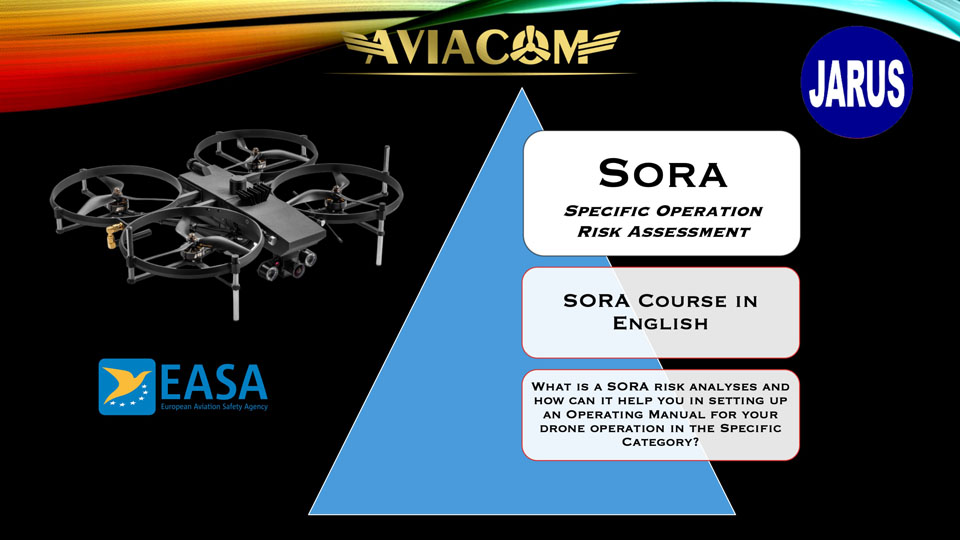 Platforma e-learningowa AVIACOM
Platforma e-learningowa AVIACOM

Drony - Online
SORA course in English SORA
SORA - Specific Operation Risk Assessment
for UAS - Unmanned Aircraft Systems
SORA course in English

What is a SORA risk analyses and how can it help you in setting up an Operating Manual for your drone operation in the Specific Category?
This course will provide a detailed decription of the SORA methodology with examples of real-life applications which enable participants to explain the process and to apply it autonomously.
The Specific Operations Risk Assessment was developed by JARUS - the Joint Authorities for Rulemaking on Unmanned Systems to provide UAVO operators a methodology for the risk assessment which is required to apply for an authorization to operate.
Specific Operations Risk Assessment (SORA) is a method to determine the risk of a UAS operation. The method consists of ten steps:
➡ Make a concept of operations document (ConOps). A ConOps describes the UAS and the planned operations.
➡ Determine the Intrinsic Ground Risk Class (GRC). The intrinsic UAS ground risk relates to the risk of a person being struck by the UAS on the ground. The GRC ranges from one to seven.
➡ Determine the Final GRC after risk reducing measures have been taken. Measures can for example be buffer zones, using a parachute, and if an emergency response plan (ERP) is in place.
➡ Determine the Initial Air Risk Class (ARC). This is a classification of the airspace collision risk. The risk is classified with a letter ranging from A to D.
➡ Determine the residual ARC. This can be done if the actual traffic in the airspace is lower than what the initial ARC classification implies. It can also be done by applying common rules and procedures, such as mitigating measures.
➡ Make sure that Tactical Mitigations Performance Requirements (TMPR) are satisfied. These requirements are measures to mitigate the risk of mid-air collisions. The requirements are derived from the ARC.
➡ Determine the Specific Assurance and Integrity Level (SAIL). This value is derived from the final GRC and residual ARC.
➡ Identify the Operational Safety Objectives (OSOs). These are derived from the SAIL value and define the requirements for technical systems, training and procedures.
➡ This step is about considering the risk for adjacent areas on the ground and airspace caused by a loss of control of the UAV operation. For requirements, see the AMC by EASA.
➡ Create a comprehensive safety portfolio that describes:
- How risk is reduced for GRC or ARC.
- How TMPR is satisfied.
- How the OSOs are satisfied.
Who should take this course
